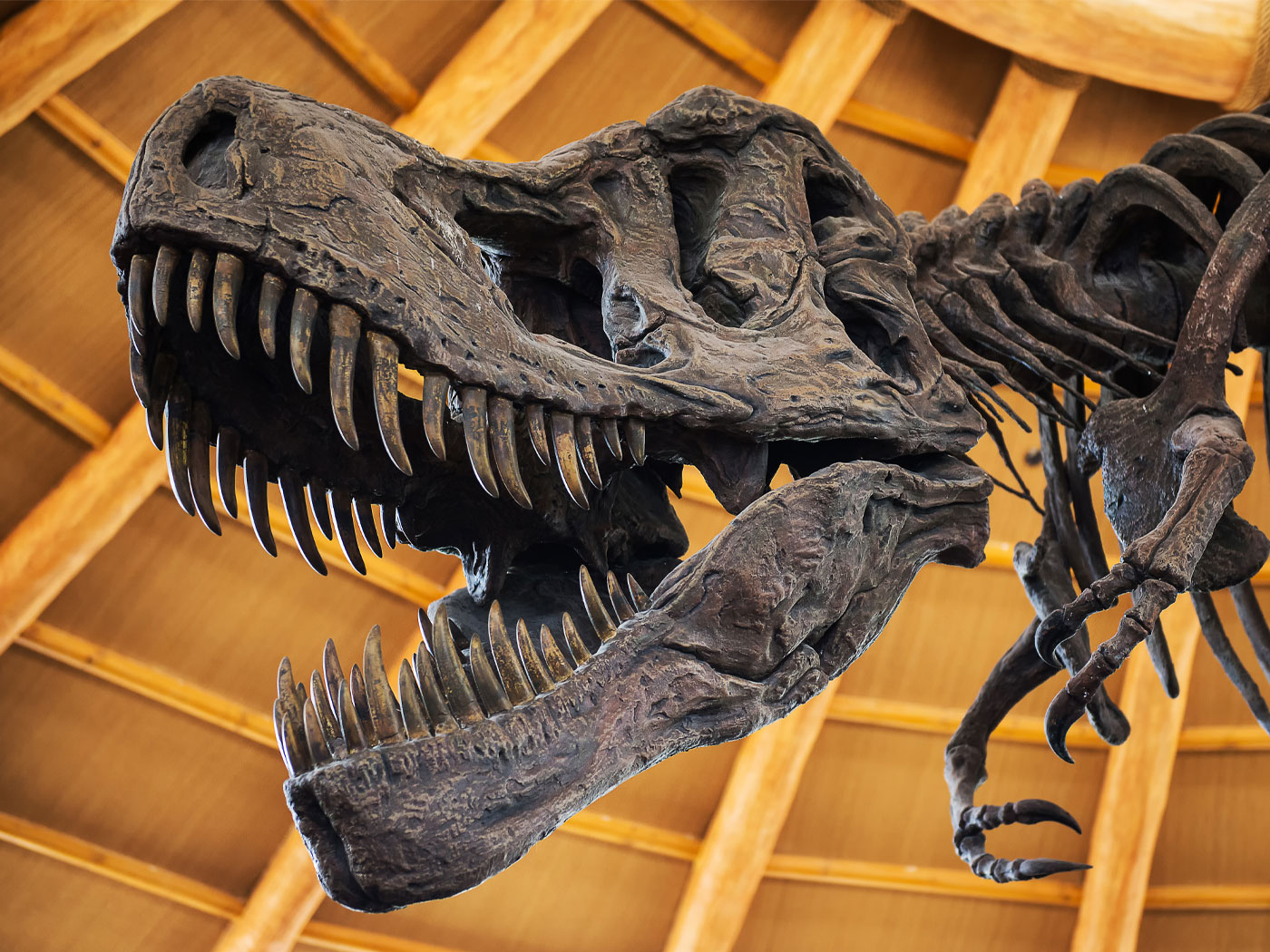A new analysis of a small pair of T. rex-like fossils, called Nanotyrannus, shows they were actually teenage T. rexes.
Holly Woodward, from Oklahoma State University, and her colleagues reporting in Science Advances, counted the growth rings in the leg bones of the two Nanotyrannus specimens. Their results showed the specimens were not a new species. Rather, they were just 13 and 15-year-old T. rex dinosaurs.1
“All modern vertebrates have a period every year where bone growth briefly pauses,” Woodward said. “We don’t know exactly why this happens, but it leaves a circle in every bone that shows when the growth stopped. We can just count the rings like with a tree to find the dinosaur’s age.”2
Counting growth rings in reptiles to determine their age is nothing new, but it must be used with caution. Several paleontologists have warned that growth rings only result in a minimal age. Adult dinosaurs can lose their growth ring pattern when they reach a certain age.3
And it shouldn’t be a surprise that new discoveries eliminate some old dinosaur species names. A recent estimate places the total number of dinosaur species somewhere between 1,543 and 2,468, with well over 1,300 presently named.4,5 Unfortunately, the scenario where the same dinosaur species has been erroneously named more than once is common (i.e., Brontosaurus and Apatosaurus).6
In fact, Dr. Michael Benton estimates that the overall success rate in discovering and naming an actual new dinosaur species has only been about 50%.7 And John (Jack) R. Horner, a co-author of the current study, has stated that he believes as many as 40% of known dinosaur species might simply be repeats of other known species, just in different stages of growth and development.8 A lot of this is due to the incomplete nature of most dinosaur discoveries.
Accordingly, this present study allows us to strike another dinosaur species name from the list. Keep in mind that there are far fewer “kinds” of dinosaurs than what are named as a species. I estimate there are only about 60 dinosaur families, which likely equate to the biblical “kind.”6 That means only around 120 dinosaurs were possibly brought on board the ark. A lot of variety is built into each biblical kind.
It’s interesting that Woodward and her fellow scientists found Nanotyrannus to be a teenage T. rex. In fact, the two specimens the researchers studied were just over half the size of a fully mature, adult T. rex, like the Sue specimen in Chicago.1 Other scientists have shown that T. rex dinosaurs matured a bit later than many other types of dinosaurs and went through a growth spurt late in their teenage years.9,10
Although the two dinosaurs studied were buried by the Flood sediments prior to reaching adulthood, they were likely about the size God chose for their kind to be on the ark. They would neither require much room nor much food during the Flood year. Upon leaving the ark, the two T. rex dinosaurs would have quickly experienced their adult growth spurt. They would likely have also become sexually mature right after leaving the ark, enabling them to quickly fulfill God’s command to multiply upon the earth (Genesis 8:17).
References
1. Woodward, H. N. et al. 2020. Growing up Tyrannosaurus rex: Osteohistology refutes the pygmy “Nanotyrannus” and supports ontogenetic niche partitioning in juvenile Tyrannosaurus. Science Advances. 6(1): eaax6250.
2. Crane, L. 2020. Tiny T. rex fossils aren’t a new species—they are just teenagers. NewScientist. Posted on newscientist.com January 1, 2020, accessed January 3, 2020.
3. Clarey, T. L. 2007. Advocates for Cold-Blooded Dinosaurs: The New Generation of Heretics. GSA Today. 17 (1): 45-46.
4. Starrfelt, J., Liow, L. H. 2016. How many dinosaur species were there? Fossil bias and true richness estimated using a Poisson sampling model. Philosophical Transactions of the Royal Society Series B: Biological Sciences. 371 (1691): doi: 10.1098/rstb.2015.0219.
5. O’Gorman, E. J., and D. W. E. Hone. 2012. Body size distribution of the dinosaurs. PLOS ONE. 7(12): 1-12. e51925.
6. Clarey, T. 2015. Chapter 10: Dinosaur Biology/Anatomy. In Dinosaurs: Marvels of God’s Design. Green Forest, AR: Master Books.
7. Benton, M. 2008. New ways of looking at dinosaur evolution. Public lecture at Michigan State University, October 23, 2008.
8. Horner, J. R. 2001. Personal communication April, 2001.
9. Erickson, G. M., K. C. Rogers, and S. A. Yerby. 2001. Dinosaurian Growth Patterns and Rapid Avian Growth Rates. Nature. 412 (6845): 429-433.
10. Erickson, G.M. et al. 2004. Gigantism and life-history parameters of Tyrannosaurid dinosaurs. Nature. 430 (7001): 772-775.
*Dr. Clarey is Research Associate at the Institute for Creation Research and earned his doctorate in geology from Western Michigan University.













